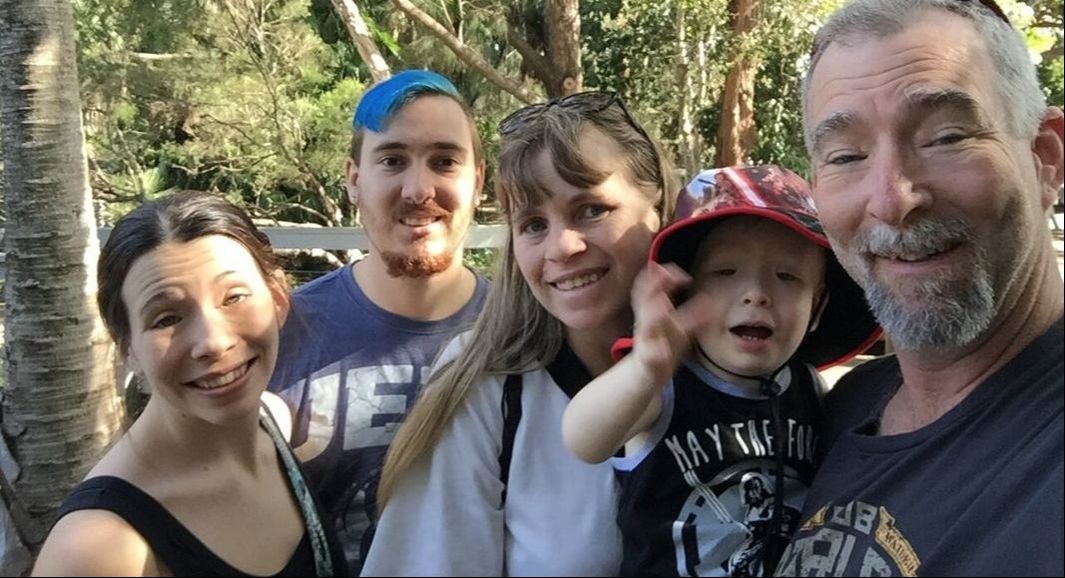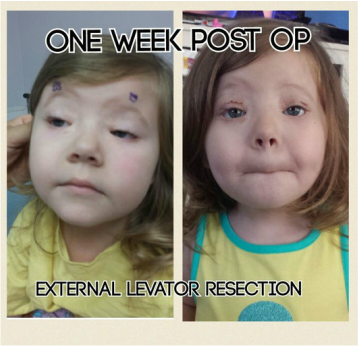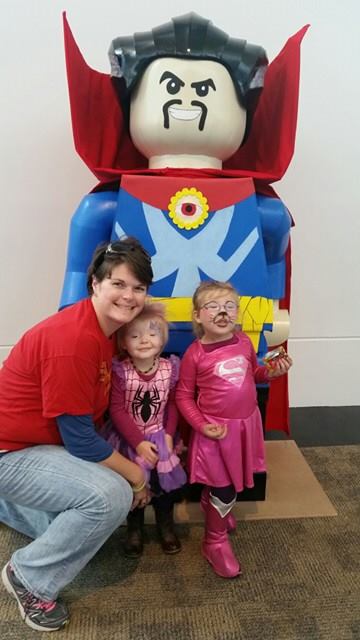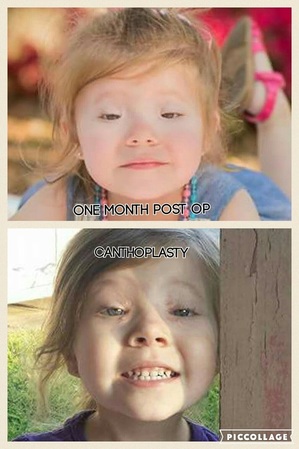Four generations of people with BPES: Grant, with daughter Caitlyn, grandson Oscar, and father Kevin.
Below is the first in a series of BPES Biographies. Meet Grant Muller from the Fraser Coast region of Queensland Australia who is the Administrator of the largest BPES facebook group. I’m excited he’s sharing his personal experience as well as coming from a family with many who have BPES. Thank you Grant!
Hi all, my name is Grant, and I have BPES. My father also has it and he was one child of five who has visible signs of it. Both my brother and myself have BPES, my brother has two boys, the eldest who has BPES and my wife and I have two daughters, the eldest who has BPES. This daughter, Caitlyn and her husband Adam now also have a son, Oscar who has BPES.
The fact that I have BPES has never formed part of who I see myself as nor have I let it dictate my life greatly and have always led my life and behaviour on the basis that I am judged on my performance and integrity not on my appearance. But I do know that I have to perform at a higher level than other people and prove myself to get people to look past the BPES aspect of my life, this is part of human nature for most people and I have had to throughout my career ensure I project my ability to ensure I am judged on ability not on looks.
To give you all a further background of my myself, I am from a farming family and my schooling years were the time in my life where it was most trying with a steady succession of being bullied and picked on until I learnt first of all how not to be a victim then secondly how to stand up for yourself. Looking back on these years I think without this period I would not have become the person I am today and the life lessons learnt have held me in good stead through the rest of my life.
After I finished school and went through a progression of short term jobs then got a job at the local sawmill as a general labourer and proved myself through effort and accomplishments to progress to an area manager of the mill. I then had the opportunity to progress my studies which led me to be the management accountant for the company. I have now established myself as a senior leader within the company and lead a wonderful life.
I have always aimed at ensuring that in everything I do I excel and my extended family is a living example of this. I met my wife Wendy when we were fifteen and we were married at nineteen, three years later we had our first child, Caitlyn, then two years after this our second, Tamara. Caitlyn is now twenty-five with a husband, Adam and a young son, Oscar.
Having a condition such as BPES doesn’t define you as a person but it does influence the choices you make and the way you interact with other people, I have found throughout my life that when meeting someone new there is often that small glance that people give when they see something different. I am now usually very forward with comments and discussions I have with people about BPES and find that once people are aware of the condition it seems to stop the sideways glances they seem to give. Having to deal with peoples glances and comments about kids is harder and while I can accept comments from other children to an extent, the comments from other parents is harder to accept. There have been times when my kids were young where I didn’t handle this very well, now I am a granddad and maybe mellowed a bit I find I look at these as opportunities to educate people or other kids though this can be really hard to do sometimes. I don’t know if there is a right or wrong way to talk to people about BPES but when I get the opportunity I do try to do this in a positive way. All you can do is reinforce to your children/grandchildren that BPES doesn’t control your life and while you may have to try harder than other people, you know that you are judged on your achievements not any other factors.
Hi all, my name is Grant, and I have BPES. My father also has it and he was one child of five who has visible signs of it. Both my brother and myself have BPES, my brother has two boys, the eldest who has BPES and my wife and I have two daughters, the eldest who has BPES. This daughter, Caitlyn and her husband Adam now also have a son, Oscar who has BPES.
The fact that I have BPES has never formed part of who I see myself as nor have I let it dictate my life greatly and have always led my life and behaviour on the basis that I am judged on my performance and integrity not on my appearance. But I do know that I have to perform at a higher level than other people and prove myself to get people to look past the BPES aspect of my life, this is part of human nature for most people and I have had to throughout my career ensure I project my ability to ensure I am judged on ability not on looks.
To give you all a further background of my myself, I am from a farming family and my schooling years were the time in my life where it was most trying with a steady succession of being bullied and picked on until I learnt first of all how not to be a victim then secondly how to stand up for yourself. Looking back on these years I think without this period I would not have become the person I am today and the life lessons learnt have held me in good stead through the rest of my life.
After I finished school and went through a progression of short term jobs then got a job at the local sawmill as a general labourer and proved myself through effort and accomplishments to progress to an area manager of the mill. I then had the opportunity to progress my studies which led me to be the management accountant for the company. I have now established myself as a senior leader within the company and lead a wonderful life.
I have always aimed at ensuring that in everything I do I excel and my extended family is a living example of this. I met my wife Wendy when we were fifteen and we were married at nineteen, three years later we had our first child, Caitlyn, then two years after this our second, Tamara. Caitlyn is now twenty-five with a husband, Adam and a young son, Oscar.
Having a condition such as BPES doesn’t define you as a person but it does influence the choices you make and the way you interact with other people, I have found throughout my life that when meeting someone new there is often that small glance that people give when they see something different. I am now usually very forward with comments and discussions I have with people about BPES and find that once people are aware of the condition it seems to stop the sideways glances they seem to give. Having to deal with peoples glances and comments about kids is harder and while I can accept comments from other children to an extent, the comments from other parents is harder to accept. There have been times when my kids were young where I didn’t handle this very well, now I am a granddad and maybe mellowed a bit I find I look at these as opportunities to educate people or other kids though this can be really hard to do sometimes. I don’t know if there is a right or wrong way to talk to people about BPES but when I get the opportunity I do try to do this in a positive way. All you can do is reinforce to your children/grandchildren that BPES doesn’t control your life and while you may have to try harder than other people, you know that you are judged on your achievements not any other factors.
Grant's family: Caitlyn Nicol (Muller), Adam Nicol, Wendy Muller, Oscar Nicol, Grant Muller.
*If you would like to share your story on this blog please contact us!
*If you would like to share your story on this blog please contact us!







 RSS Feed
RSS Feed